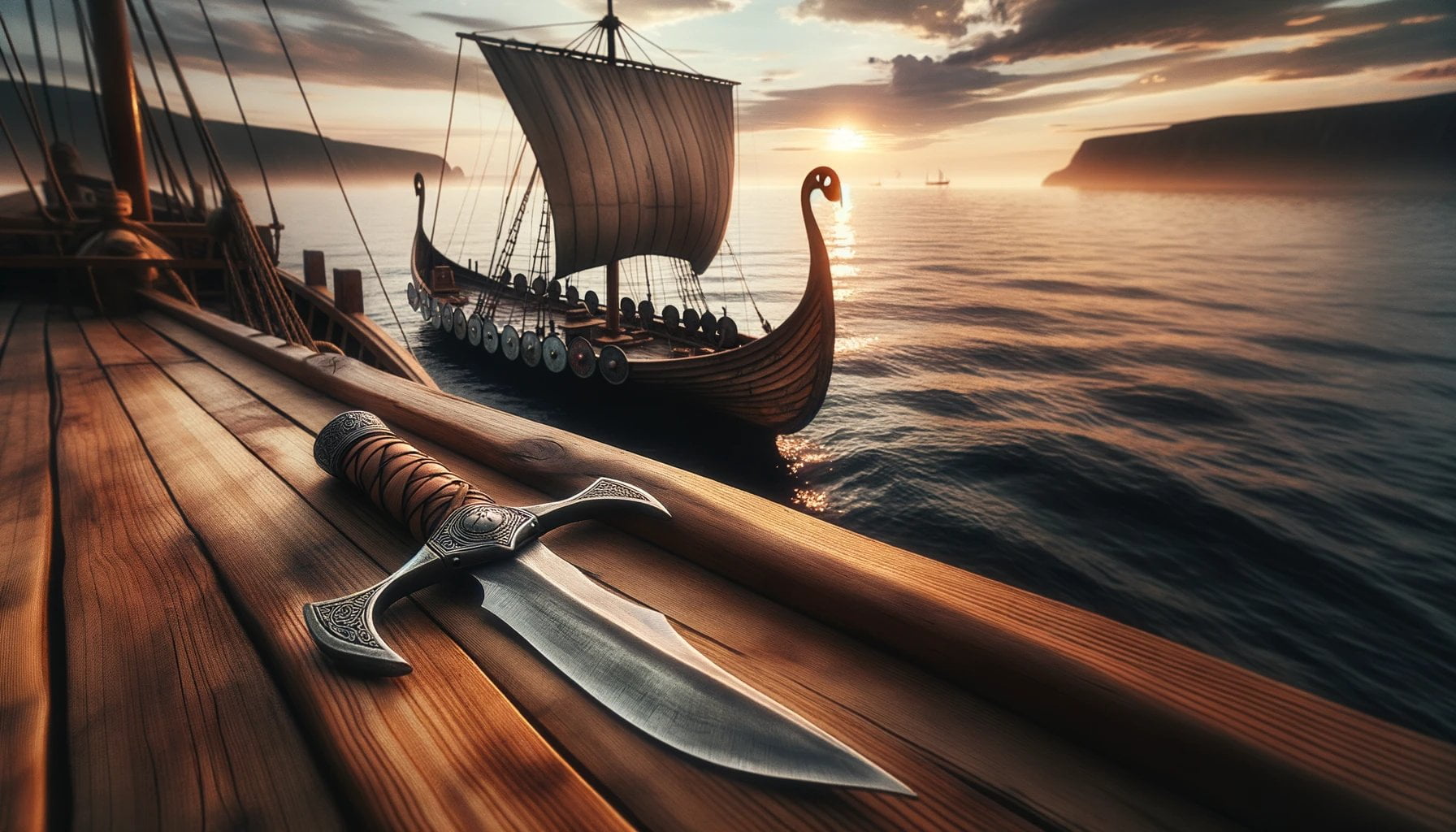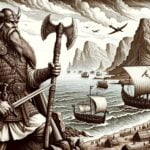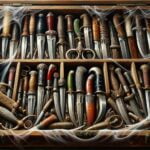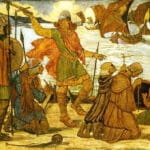Did Vikings use a seax? This captivating question lies at the heart of Norse history and Viking culture. As a seasoned anthropologist and expert in Norse weaponry, I have spent over a decade immersed in the study and analysis of ancient artifacts. With an eagle-eyed focus on detail and an understanding of the symbolism behind Viking weaponry, I aim to shed light on the lesser-known aspects of Viking life. In this article, we will delve into the intriguing topic of whether Vikings utilized seaxes, unveiling the truth behind this fascinating query.
Did Vikings use a seax?
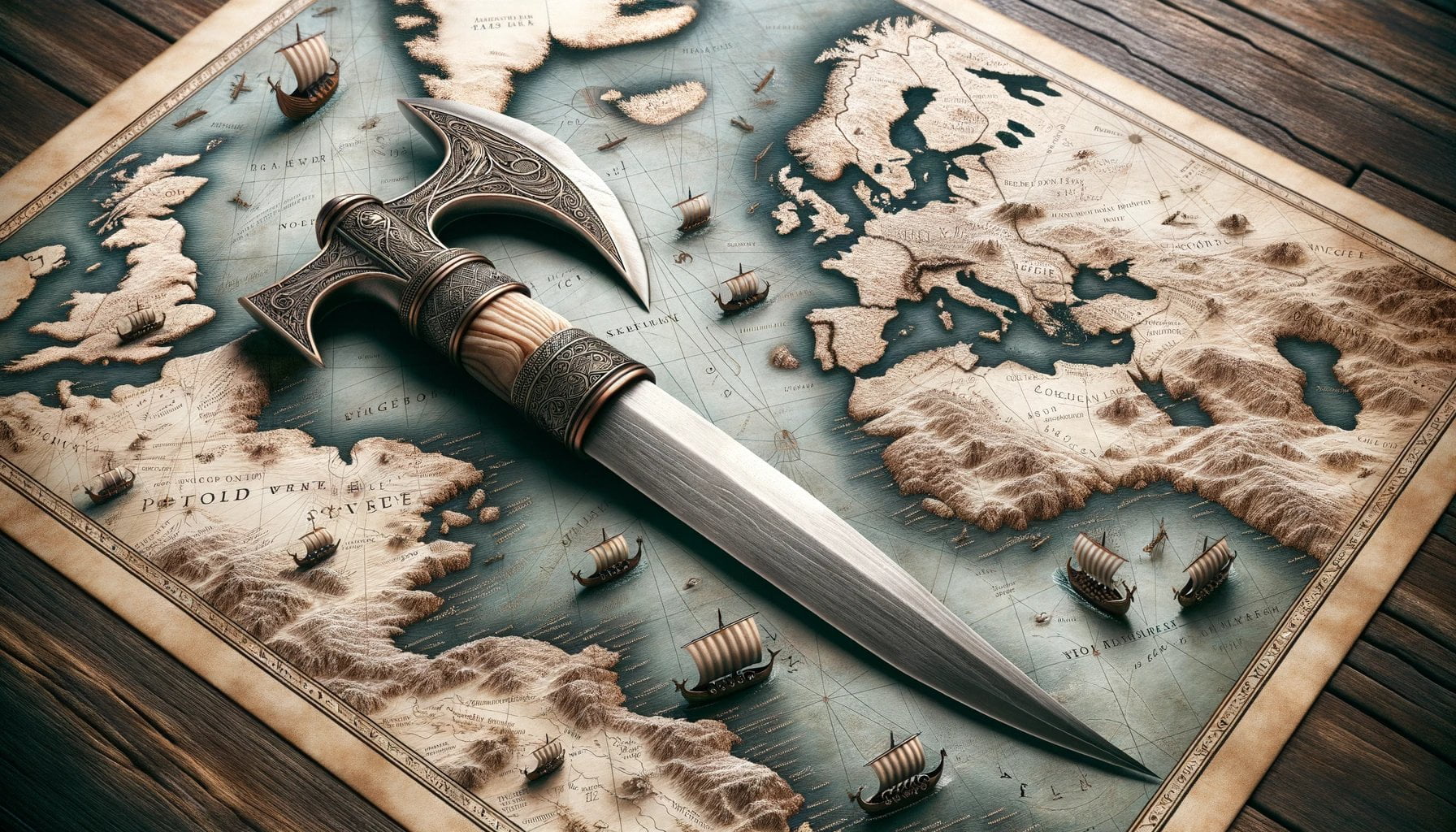
When it comes to the weapons of the Vikings, swords, spears, and axes often steal the spotlight. But did Vikings also utilize a seax in their arsenal? The answer is a resounding yes.
The seax, also referred to as a sax or sex, was a long iron knife with a single blade. In the Viking Age, this versatile weapon ranged in size from a long knife to a short sword. While it served as a backup weapon on the battlefield when others broke or when combat moved to close quarters, it also had everyday uses for chores and tasks.
But what made the seax such a favored choice amongst Vikings? For starters, the seax was deeply rooted in Scandinavian history. The broken-back style of seax, in particular, was the blade shape of choice for these seafaring warriors. This style, usually heavier, could be used as a machete-like arm or falchion.
The seax was not limited to a single size either. Wealthier individuals might have owned larger seaxes, essentially using them as swords. The blades of seaxes were often grooved, and some even boasted the craftsmanship of precious metals or runes.
Now, you might be wondering how the Vikings sharpened their seaxes or exactly how they made these weapons. Well, unfortunately, the historical records do not provide us with clear details. We can only surmise that the Vikings had their own methods and techniques for forging and maintaining their seaxes.
It’s important to note that the seax was not the only weapon the Vikings employed. Shields, for example, were also an essential part of their arsenal, though the materials used for shield construction are not precisely specified. Nonetheless, the seax held its significance as a reliable backup weapon and a versatile tool.
To summarize, the Vikings did indeed use seaxes. These long iron knives with single blades were employed in battle as backup weapons and for everyday chores. The broken-back style, often heavier and more machete-like, was the most popular amongst Vikings. While the specifics on how the Vikings sharpened their seaxes and crafted their weapons remain unclear, there’s no denying the seax’s place in Viking history. So, the next time you hear about Viking weaponry, remember that the seax played a vital role in their arsenal.
Ancient daggers were once the quintessential weapons of warriors, brimming with mystery and a hint of danger. Explore the world of these fascinating artifacts by diving into our collection of ancient daggers. Discover the craftsmanship and history behind each blade by clicking here.
Varied types of seaxes and their purposes
In the world of Viking weaponry, seaxes hold a prominent place as a versatile and essential tool. These seaxes, which can be described as a type of knife or shortsword, were used by the Vikings for both combat and everyday tasks. But what were the varied types of seaxes and what were their specific purposes? Let’s delve into this intriguing topic and shed light on the different kinds of seaxes that existed in the Viking arsenal.
1. The Broken-Back Seax: A Machete-Like Arm
One of the most popular types of seaxes among the Vikings was the broken-back seax. This seax earned its name due to its distinct broken or angled shape along the back of the blade. With its straight cutting edge and sharply angled back, it resembled a machete-like weapon or a falchion. The broken-back seax was well-suited for various tasks, such as cutting through vegetation, preparing food, and even as a backup weapon on the battlefield. Its versatility made it a valuable tool and a reliable companion for the Vikings.
2. Larger Seaxes: From Knife to Sword
While smaller seaxes served as everyday tools or backup weapons, larger seaxes were used by wealthier individuals as swords. These larger seaxes had extended blade lengths and provided more reach and power in combat. Just like the broken-back seax, the larger seaxes had a straight cutting edge, allowing for precise strikes. The Vikings recognized the advantages of these longer seaxes and utilized them as formidable weapons when needed.
3. Small Seaxes: The Hidden Eating Knives
In addition to their combat and utility functions, seaxes also served as eating knives for the Vikings. Small seaxes, similar to modern-day steak knives, were utilized during meals to assist in cutting and consuming food. These compact eating knives fell under the seax category due to their blade length, which was 18cm (7 inches) or longer. This indicates that seaxes encompassed a wide range of sizes, from small eating knives to full-sized swords, demonstrating the versatility of these weapons.
With their distinct blade shapes and lengths, seaxes played a significant role in Viking history. Viking burials from the Viking Age often contained more than one knife, highlighting their importance in Viking society. These burials serve as a testament to the practical and symbolic value of seaxes to the Vikings.
It is important to note that the specifics regarding the manufacturing and maintenance of seaxes remain somewhat unclear. While we may not have a complete understanding of the craftsmanship behind these weapons, their existence in Viking culture is well-documented.
In summary, the Vikings utilized seaxes in their arsenal, and these weapons came in various types and sizes. From the versatile broken-back seax to the larger seaxes used as swords, and even the smaller seaxes employed as eating knives, they served as essential tools, backup weapons, and symbols of status and skill. The varied types of seaxes offer us a glimpse into the complex and diverse weaponry of the Viking age, showcasing their ingenuity and adaptability on and off the battlefield.
So, did Vikings use seaxes? Absolutely. Their presence in Viking history and archaeology speaks volumes about their significance and impact in the Viking world.
Role of Seaxes in Viking Society and Warfare
Seaxes, the versatile and deadly weapons used by the Vikings, played a crucial role in both their society and warfare. Let’s delve into the fascinating world of seaxes and uncover their significance in Viking culture.
1. Everyday Tools Transformed into Weapons
Vikings were known for their resourcefulness and adaptability, and seaxes perfectly exemplified these traits. Originally designed as everyday tools for tasks like cutting wood, building homes, and hunting game, seaxes became an integral part of Viking warfare. Vikings, being well-versed in the skill of wielding axes from their daily lives, translated their proficiency into the battlefield. The familiarity and ease of use made seaxes ideal backup weapons.
2. Versatility in Combat
When enemies closed in, and ranged weapons became ineffective, Vikings relied on their trusty seaxes. These weapons, with their single blade tapering to a point, were nimble and deadly in close quarters combat. While mainly used for hunting, seaxes of various sizes were capable of inflicting serious damage on the battlefield. Ranging from the length of a long knife to that of a short sword, seaxes provided Vikings with a range of options based on their needs and preferences.
3. Seaxes vs. Daggers: The Confusion
It should be noted that there is some confusion regarding the classification of seaxes compared to daggers. While seaxes shared similarities with daggers, their longer blade lengths and versatility set them apart. The seax’s ability to serve as both a tool and a weapon made it an essential component of Viking life. In contrast, daggers were primarily used for close combat, dressing animals, cutting ropes, and various other tasks.
4. Symbol of Wealth and Power
Seaxes were not just weapons for the average Viking. Wealthier individuals owned larger seaxes, which they could use as swords. These extended blade lengths granted them increased reach and power in combat, solidifying their status and influence. Seaxes of varying sizes were even found in Viking burials, highlighting their importance in Viking society and their association with honor and prestige.
5. The Beauty in Simplicity
Viking axes, including seaxes, were characterized by their simple yet elegant design. They boasted long handles and wide, curved blades for delivering powerful blows. The broken-back style of seax, with its distinct broken or angled shape along the back of the blade, was particularly popular among Vikings. This style allowed for efficient vegetation cutting, food preparation, and reliable backup on the battlefield.
Conclusion
Seaxes played a multifaceted role in Viking society and warfare. From their origins as everyday tools to their adaptation as deadly weapons, seaxes showcased the ingenuity and adaptability of the Vikings. With their versatility, symbolism of wealth and power, and elegant design, seaxes became an indispensable part of Viking culture. As we explore the fascinating world of the Vikings, it becomes clear that seaxes were much more than mere tools—they were the embodiment of Viking strength and resilience.
So, did Vikings utilize seaxes in their arsenal? Absolutely. These weapons were a testament to the resourcefulness, expertise, and ferocity of Viking warriors. They wielded seaxes with mastery, both in the realms of daily life and on the battlefield, making them an indelible part of Viking history.
Impact and Legacy of Seaxes in Viking Culture
From their notorious raids to their distinctive longships, the Vikings have left an indelible mark on history. But what about their weaponry? Did Vikings truly utilize seaxes in their arsenal? In this article, we will delve into the impact and legacy of seaxes in Viking culture, separating fact from fiction to uncover the truth.
What Were Seaxes?
Seaxes were an integral part of the Viking arsenal, serving as both weapons and tools. The term “seax” originates from Old English and refers to a type of knife. These knives varied in size, ranging from long knives to short swords. The broken-back style of seax, with its distinct angled shape along the back of the blade, was particularly popular among the Vikings.
Versatile Tools and Weapons
Used for both combat and everyday tasks, seaxes highlighted the ingenuity and adaptability of the Vikings. As nimble and deadly weapons, seaxes provided versatility in close-quarters combat. At the same time, they were essential tools for cutting vegetation, preparing food, and undertaking a myriad of other day-to-day activities.
Symbol of Wealth and Power
In Viking society, the size and quality of one’s seax often reflected their wealth and power. Wealthier individuals would possess larger seaxes, which could be wielded as symbols of status and authority. These extended blade lengths provided greater reach and power in combat, further accentuating their potency as weapons.
Evolution and Influence
Seaxes were not just weapons; they represented the evolution of Viking weaponry and tactics throughout their expansion. Originally, seaxes may have been hunting or farm tools that gradually transformed into combat weapons. As the Vikings encountered different cultures, they adapted their arsenal, incorporating new ideas and methods into their weaponry.
Foundations of Skilled Combat
The Vikings’ expertise in wielding axes translated seamlessly onto the battlefield, making seaxes ideal backup weapons. Their familiarity with axes enabled them to quickly grasp the mechanics of using seaxes in combat. The seax’s design allowed for agile movement, giving the Vikings an edge in close-quarters fighting, where maneuverability was crucial.
Legacy in Viking Society
Seaxes played a significant role in Viking society, as evidenced by their presence in Viking burials. It was not uncommon for these burials to contain multiple seaxes, underscoring their importance. The legacy of seaxes extends beyond their function as weapons and tools; they represent the resourcefulness, innovation, and adaptability of Viking culture.
In Conclusion
Seaxes were far more than mere knives; they were versatile weapons and indispensable tools that shaped Viking culture. With their impact on warfare, symbolism of wealth, and adaptation to changing circumstances, seaxes embodied the essence of the Viking spirit. Whether on the battlefield or in simpler daily tasks, the legacy of seaxes continues to echo through the annals of Viking history.
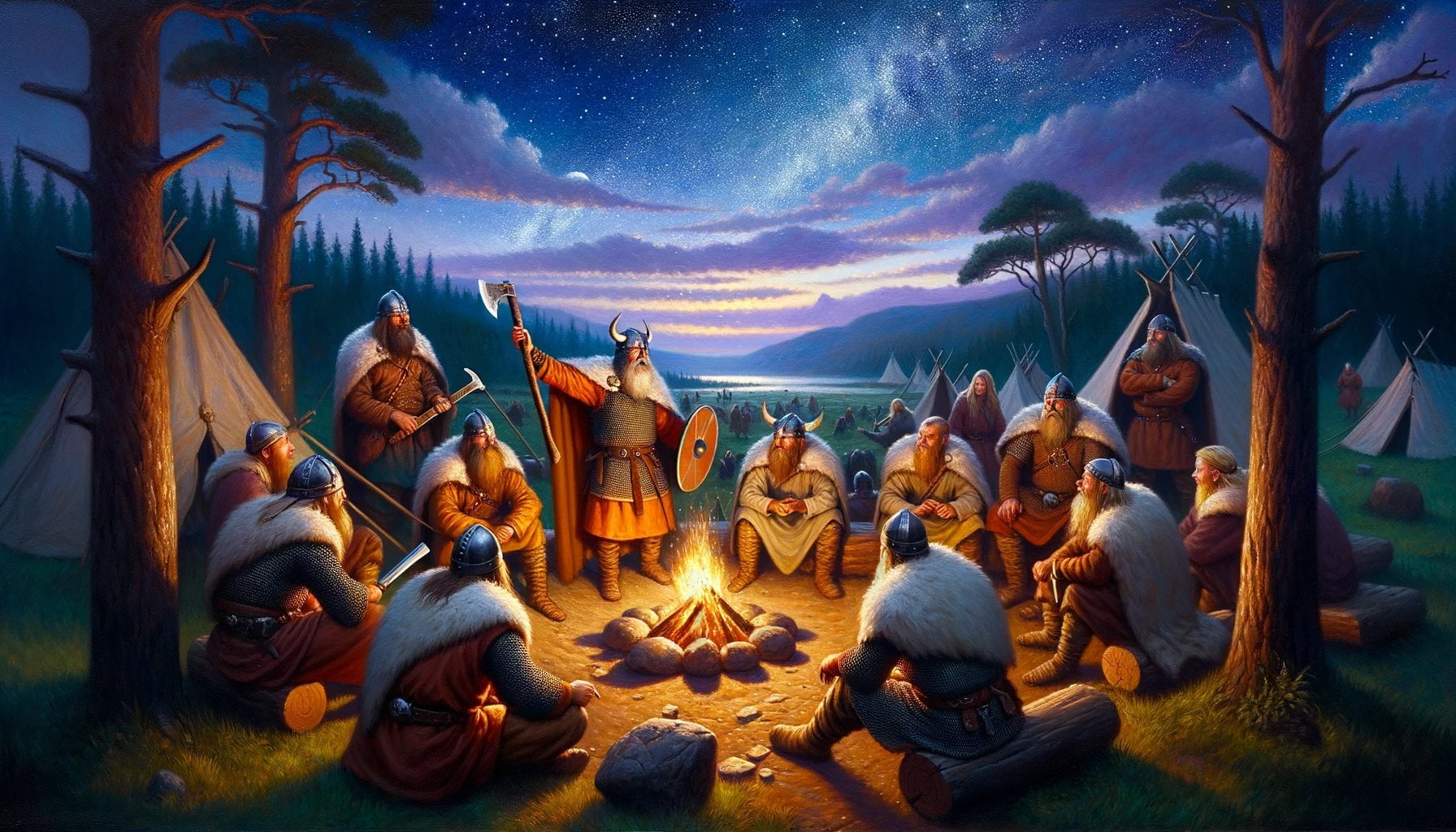
FAQ
Q1: What is a seax and how did Vikings use it?
A1: A seax is a type of Viking weapon that was a long iron knife with a single blade. Vikings used seaxes in both combat and everyday chores. They served as backup weapons on the battlefield when other weapons broke or when combat moved to close quarters. Seaxes were also versatile tools for everyday tasks.
Q2: How long were seaxes and were they used in combat?
A2: Seaxes had a blade length of 18cm (7″) or longer and were possibly used in combat. They ranged from a long knife to a short sword and were categorized based on their length. Some seaxes were even as long as a short sword, and wealthier individuals might own larger seaxes that were effectively swords.
Q3: What other weapons did Vikings use?
A3: In addition to seaxes, Vikings used a variety of weapons including swords, spears, axes, bows, and shields. They wielded axes in their everyday lives for tasks like cutting wood, building homes, and hunting game. The skill and familiarity with axes from everyday use translated to proficiency in warfare.
Q4: Did Vikings carry seaxes with them as sidearms?
A4: Yes, Vikings carried seaxes as a sidearm and backup weapon in addition to their other weapons. Seaxes were used when an enemy moved too close for ranged weapons to be effective. Vikings relied on their seaxes for close combat situations.
Q5: Were seaxes mainly used for hunting or combat?
A5: Seaxes were primarily used for hunting but varied in size and could be used in combat as well. They had a single blade that tapered to a point and were not suitable for fine, detailed work. Seaxes were Viking weapons used for hacking and were designed for powerful blows.
- Star Ring Trends: Etsy vs Amazon - March 28, 2025
- Boost Pollinator Habitats: Baby Blue Eyes Sustainable Farming Guide - March 28, 2025
- Protect Big Black Bears: Effective Conservation Strategies - March 28, 2025
